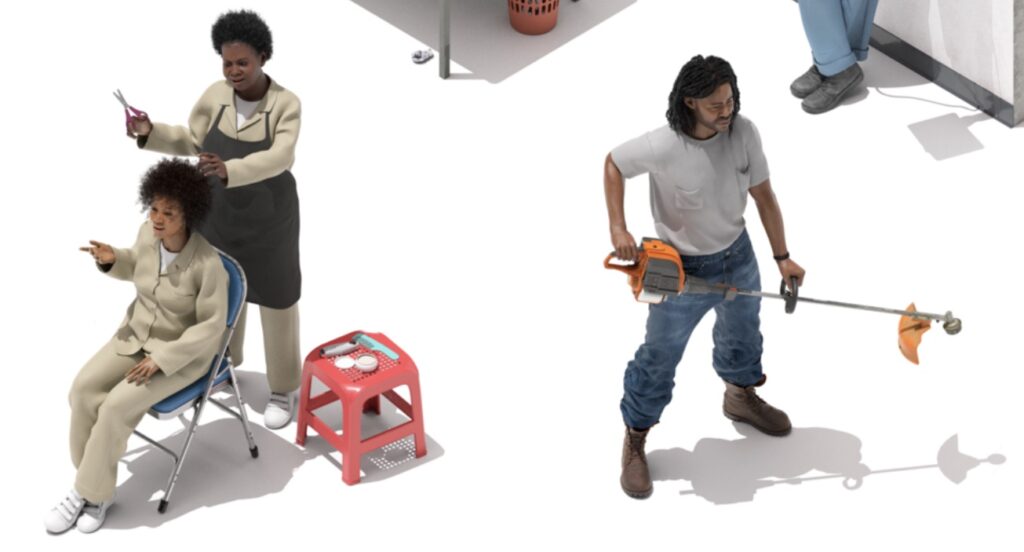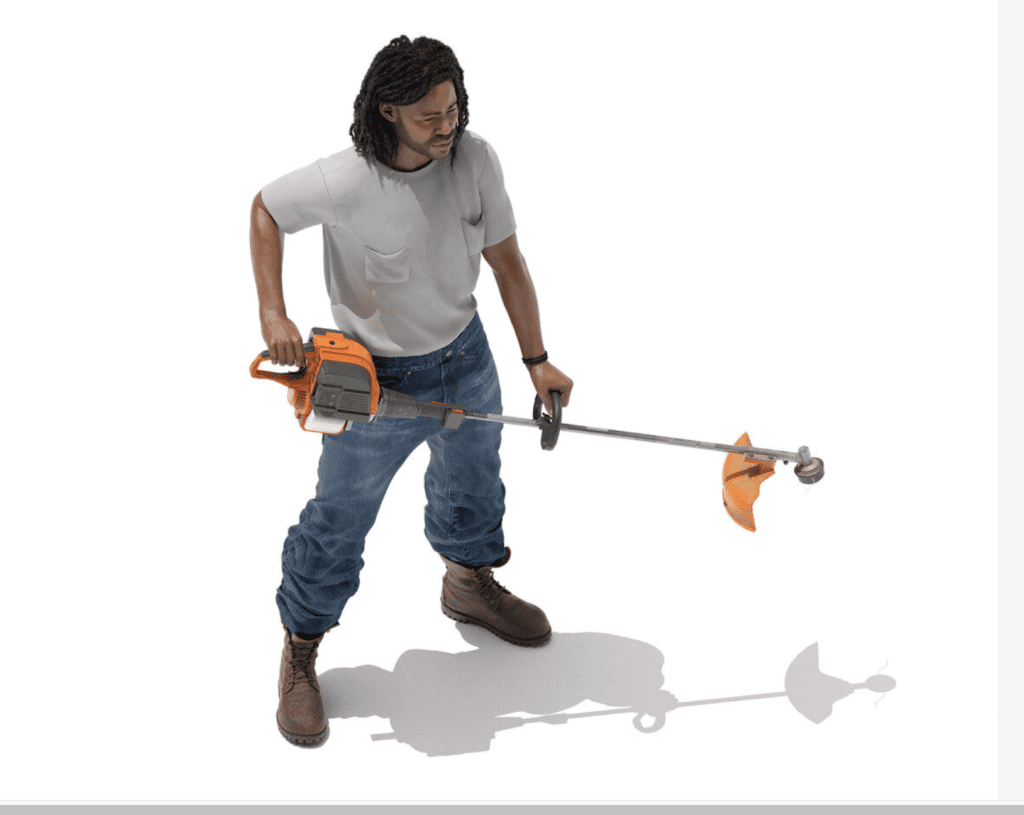
Editor’s note: Below are excerpts from an article by Beth Schwartzapfel, originally published by The Marshall Project, and published here with permission. Additional reporting is by Lawrence Bartley with additional development by Ryan Murphy. Please view the link at the end of the excerpts to read all of the actual stories from prisoners about how they survive.
We asked people in prison to track their earning and spending — and bartering and side hustles — for 30 days. Their accounts reveal a thriving underground economy behind bars.
People in prison get “three hots and a cot,” right? So, what do they need money for? A lot, it turns out.
Prisons typically provide the bare minimum when it comes to food, clothes, shoes and hygiene supplies. Some states provide items such as toothpaste, soap and limited amounts of letter-writing supplies only to the “indigent,” or those who have little to no money. Other goods that many would consider necessities — deodorant, shampoo, sneakers, thermal clothes for winter — are often only available to people who can afford them.
Prisons typically provide the bare minimum when it comes to food, clothes, shoes and hygiene supplies. Some states provide items such as toothpaste, soap and limited amounts of letter-writing supplies only to the “indigent,” or those who have little to no money. Other goods that many would consider necessities — deodorant, shampoo, sneakers, thermal clothes for winter — are often only available to people who can afford them.
But earning enough from a prison job is nearly impossible: The average prison wage maxes out at 52 cents per hour, according to a new ACLU analysis, and many people make pennies per hour. That means that basics, like a $3 tube of toothpaste, can take days of work to afford. If you get paid, that is. In at least six states — Alabama, Arkansas, Georgia, Mississippi, South Carolina and Texas — most prisoners aren’t paid at all for their labor.

To make up for their paltry wages, people in prison often take part in a thriving underground economy of side hustles, bartering stamps or commissary items for everything from hand-drawn greeting cards to makeshift home cooking to legal help.
In recent months, The Marshall Project has corresponded with dozens of incarcerated people about the money they make, the money they spend and the lengths to which they go to secure basic needs and comforts. We asked several people to log their transactions for us; they also sent receipts and monthly account statements for commissary purchases. Along with that information, we gathered commissary catalogs and conducted email and phone interviews about their official prison jobs and side hustles. Most are serving long sentences for serious crimes; some have spent decades behind bars.
Read their stories to learn how they navigate and survive, often through sheer determination and ingenuity, the harsh reality of prison economics. [Below is one of the stories that you will find at the link below.]
Ricardo Ferrell, 64
JOB: Prisoner observation aide, helping to monitor incarcerated men under suicide watch. Also a reading and writing tutor.
LOCATION: Gus Harrison Correctional Facility, Adrian, Michigan
MONTHLY INCOME: $250-$350
I was carefully selected to be a POA, which means prisoner observation aide, after applying for it. There was rigorous screening and training. Prior to the prisoners doing this job, correctional officers had to do it. We’re getting paid $3.34 per four-hour session. So we’re saving them money. Also, a prisoner on suicide watch would be more apt to speak with a fellow prisoner than a CO or a mental health professional. As soon as we’re at the door, they’re revealing what’s going on.
If I work two sessions, that’s $6.68 per day. Almost nothing else in the Department of Corrections pays like this. Plus, during Covid, they gave us hazard pay — $2 extra per day. Last July, I made $334. The two primary things I spend on are: my phone credit account and commissary store purchases. The food at the chow hall is terrible and of poor quality — it’s not fit for a dog, seriously.
Recently, the commissary prices have been significantly raised. For example, an 8-ounce bag of Maxwell House coffee increased from $8.45 to $10.01. A jar of mayonnaise almost doubled in price, from $3.61 to $6.12. The same crunch being felt by ordinary folks in society is magnified for those inside because of the low wages paid for prison labor.
But if you save like I do, then you can have a nice little nest egg when you get out of here. I have $3,100 in my account.To do my job, I got up at 5:00 yesterday morning. Washed up. Did my other work assignment real quick. When you take this job, it still allows you to have a dual assignment. I also tutor guys on the unit with their reading and writing.Then, at 6:30, I went over to segregation. They strip-search us before we go over there. They give us these pink shirts with “POA” on them. I’m relieving somebody that’s already been there. He’ll bring me up to speed, and I pick up where the guy left off.
When I first sit down, I do a silent prayer for the individual in the cell. And every 15 minutes I document what the person is doing. I might say, ‘He got up and used the toilet, and then he laid back down.’ I try to engage them in conversation if they want to talk. The vast majority of guys on suicide watch like to talk.
I get them to laugh. I try to talk to them about what’s going on. Most of these guys are going to get out of here in no time. They’ve got paroles. They’re going home in less than a year. I tell those guys, ‘Look, here’s my situation. My mother got murdered while I was in here. I’ve been here 41 years. I got a bunch of buddies that never made it out. They died before they could make it out.’ What I’m trying to tell them is, ‘You’ve got everything in the world going for you, man, why harm yourself?’
I find the job to be therapeutic. I had a close friend that came real close to killing themselves. Not only do I help these individuals, by doing this, I’m helping myself. I’m in here for taking someone else’s life. Now I’m saving people’s lives. That’s how I look at it.
Read the accounts of more prisoners at:

This is a little bit off the subject but it defines the role “convict leasing” played in our country.
Convict leasing was a system of forced penal labor which was historically practiced in the Southern United States and overwhelmingly involved African-American men. Recently,[not verified in body] a form of the practice (which draws voluntary labor from the general prison population) has been instituted in the Western United States.[further explanation needed][1][full citation needed] In the earlier forms of the practice, convict leasing provided prisoner labor to private parties, such as plantation owners and corporations (e.g. Tennessee Coal and Iron Company, Chattahoochee Brick Company). The lessee was responsible for feeding, clothing, and housing the prisoners.
The state of Louisiana leased out convicts as early as 1844,[2] but the system expanded all through the South with the emancipation of slaves at the end of the American Civil War in 1865. It could be lucrative for the states: in 1898, some 73% of Alabama’s entire annual state revenue came from convict leasing.[3]
While states of the Northern United States sometimes contracted for prison labor, the historian Alex Lichtenstein notes that “only in the South did the state entirely give up its control to the contractor; and only in the South did the physical “penitentiary” become virtually synonymous with the various private enterprises in which convicts labored.”[4]
Corruption, lack of accountability, and racial violence resulted in “one of the harshest and most exploitative labor systems known in American history.”[5] African Americans, mostly adult males, due to “vigorous and selective enforcement of laws and discriminatory sentencing”, made up the vast majority—though not all—of the convicts leased.[6]
The writer Douglas A. Blackmon described the system: “It was a form of bondage distinctly different from that of the antebellum South in that for most men, and the relatively few women drawn in, this slavery did not last a lifetime and did not automatically extend from one generation to the next. But it was nonetheless slavery – a system in which armies of free men, guilty of no crimes and entitled by law to freedom, were compelled to labor without compensation, were repeatedly bought and sold, and were forced to do the bidding of white masters through the regular application of extraordinary physical coercion.”[7]
U.S. Steel is among the American companies who have acknowledged using African-American leased convict labor.[8] The practice peaked around 1880, was formally outlawed by the last state (Alabama) in 1928, and persisted in various forms until it was abolished by President Franklin D. Roosevelt via Francis Biddle’s “Circular 3591” of December 12, 1941.
Wikileaks